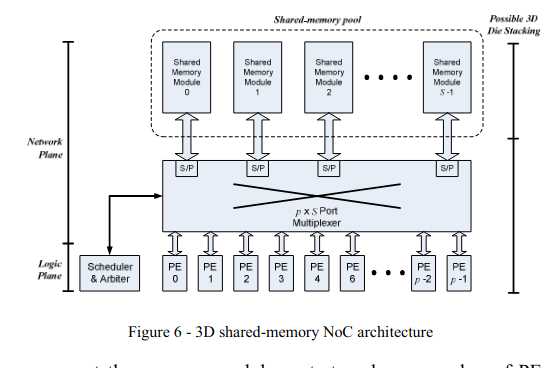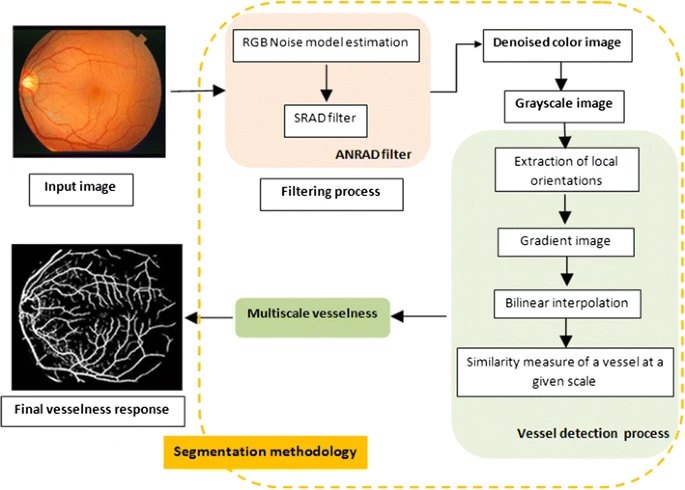Frequency-dependent effective capacitance of supercapacitors using electrospun cobalt-carbon composite nanofibers
Mixing carbon-based materials with pseudocapacitive material is a widely used strategy to prepare high-energy, high-power supercapacitors. However, phase separation is inevitable after extended charging/discharging which leads to the degradation of performance metrics of the device. Here, we prepare in a single step cobalt-incorporated carbon nanofibers (CNF) by electrospinning homogeneous solutions of polyacrylonitrile (PAN) with cobalt acetate at different nominal proportions (1:0 to 1:1), and investigate their stability and capacitive behavior in symmetric supercapacitors. The

Novel 3D memory-centric NoC architecture for transaction-based SoC applications
Large and complex system-on-chip devices consisting of many processor cores, accelerators, DSP functions and many other processing and memory elements are becoming common in the semiconductor industry nowadays. To communicate, these processing and memory elements need to have a network-on-chip (NoC) that is scalable enough to support large number of elements and large bandwidth among other requirements. This paper evaluates the performance of the 2D memory-centric NoC architecture from throughput and latency perspective versus the Mesh topology. We also propose a memory-centric architecture
Modified kinetic-hydraulic UASB reactor model for treatment of wastewater containing biodegradable organic substrates
This paper addresses a modified kinetic-hydraulic model for up-flow anaerobic sludge blanket (UASB) reactor aimed to treat wastewater of biodegradable organic substrates as acetic acid based on Van der Meer model incorporated with biological granules inclusion. This dynamic model illustrates the biomass kinetic reaction rate for both direct and indirect growth of microorganisms coupled with the amount of biogas produced by methanogenic bacteria in bed and blanket zones of reactor. Moreover, the pH value required for substrate degradation at the peak specific growth rate of bacteria is
Fractional-Order Model (FOM) for high-strength substrate biodegradation in conventional UASB reactor
This paper introduces a Fractional-Order Model (FOM) of Up-flow Anaerobic Sludge Blanket (UASB) reactor for wastewater treatment regarding high-strength substrate biodegradation. The model can investigate the biogas production rate as well as the specific growth rate of bacteria with extra degree of freedom. Also, the hereditary effect of resident biomass on substrate degradation is studied on periodically long terms. Moreover, biomass concentration is examined in reactor under the influence of various fractional orders. Several numerical simulation results are introduced based on Grünwald
Analytical solution for fractional derivative gas-flow equation in porous media
In this paper, we introduce an analytical solution of the fractional derivative gas transport equation using the power-series technique. We present a new universal transform, namely, generalized Boltzmann change of variable which depends on the fractional order, time and space. This universal transform is employed to transfer the partial differential equation into an ordinary differential equation. Moreover, the convergence of the solution has been investigated and found that solutions are unconditionally converged. Results are introduced and discussed for the universal variable and other

Optimized Edge Detection Technique for Brain Tumor Detection in MR Images
Genetic algorithms (GAs) are intended to look for the optimum solution by eliminating the gene strings with the worst fitness. Hence, this paper proposes an optimized edge detection technique based on a genetic algorithm. A training dataset that consists of simple images and their corresponding optimal edge features is employed to obtain the optimum filter coefficients along with the optimum thresholding algorithm. Qualitative and quantitative performance analyses are investigated based on several well-known metrics. The performance of the proposed genetic algorithm-based cost minimization

Noise-estimation-based anisotropic diffusion approach for retinal blood vessel segmentation
Recently, numerous research works in retinal-structure analysis have been performed to analyze retinal images for diagnosing and preventing ocular diseases such as diabetic retinopathy, which is the first most common causes of vision loss in the world. In this paper, an algorithm for vessel detection in fundus images is employed. First, a denoising process using the noise-estimation-based anisotropic diffusion technique is applied to restore connected vessel lines in a retinal image and eliminate noisy lines. Next, a multi-scale line-tracking algorithm is implemented to detect all the blood
Comparative study of fractional filters for Alzheimer disease detection on MRI images
This paper presents a comparative study of four fractional order filters used for edge detection. The noise performance of these filters is analyzed upon the addition of random Gaussian noise, as well as the addition of salt and pepper noise. The peak signal to noise ratio (PSNR) of the detected images is numerically compared. The mean square error (MSE) of the detected images as well as the execution time are also adopted as evaluation methods for comparison. The visual comparison of the filters capability in medical image edge detection is presented, that can help in the diagnosis of
Fractional-order mathematical model for Chronic Myeloid Leukaemia
This paper is dedicated to develop a fractional order model of the rate of change of cancerous blood cells in Chronic Myeloid Leukaemia using fractional-order differential equations as well as tackling the factors that affect this rate and compare between them. The simulated cases (using MATLAB) prove that the proposed model is doable in terms of the variables positions in the equations and its effect on the overall population. Also, the effect of the Pactional order is investigated through three parameters sets and it has shown strong influence on the dynamic response. © 2017 IEEE.
Fuzzy firefly clustering for tumour and cancer analysis
Swarm intelligence represents a meta-heuristic approach to solve a wide variety of problems. Searching for similar patterns of genes is becoming very essential to predict the expression of genes under various conditions. Firefly clustering inspired by the behaviour of fireflies helps in grouping genes that behave alike. Contrasting hard clustering methodology, fuzzy clustering assigns membership values for every gene and predicts the possibility of belonging to every cluster. To distinguish highly expressed and suppressed genes, the research in this paper proposes an efficient fuzzy-firefly
Pagination
- Previous page ‹‹
- Page 36
- Next page ››
